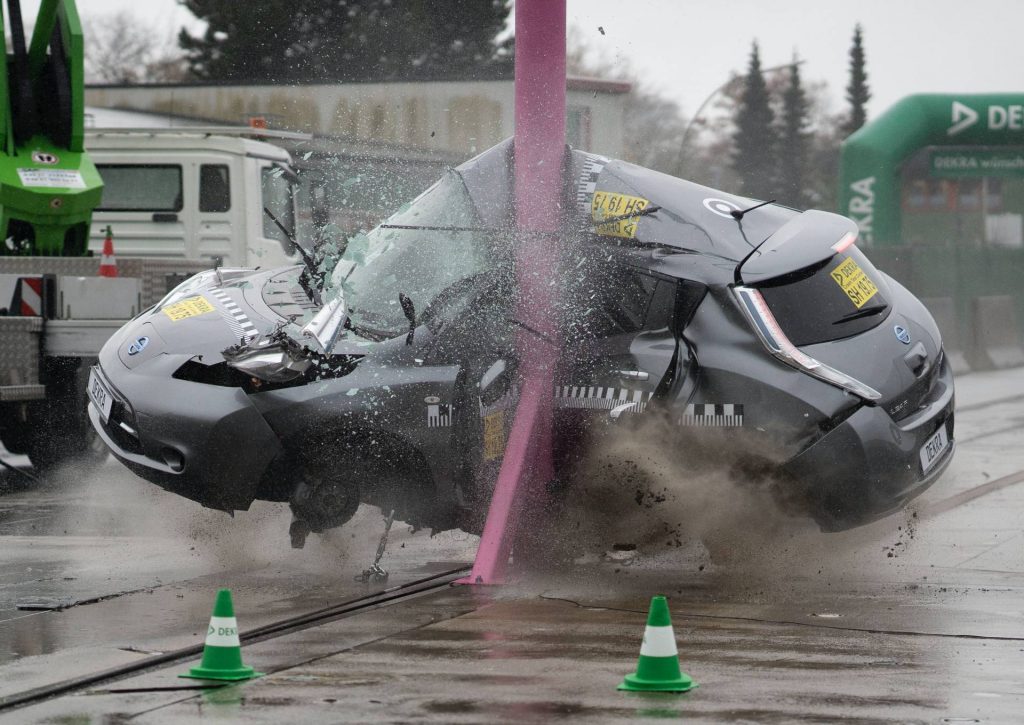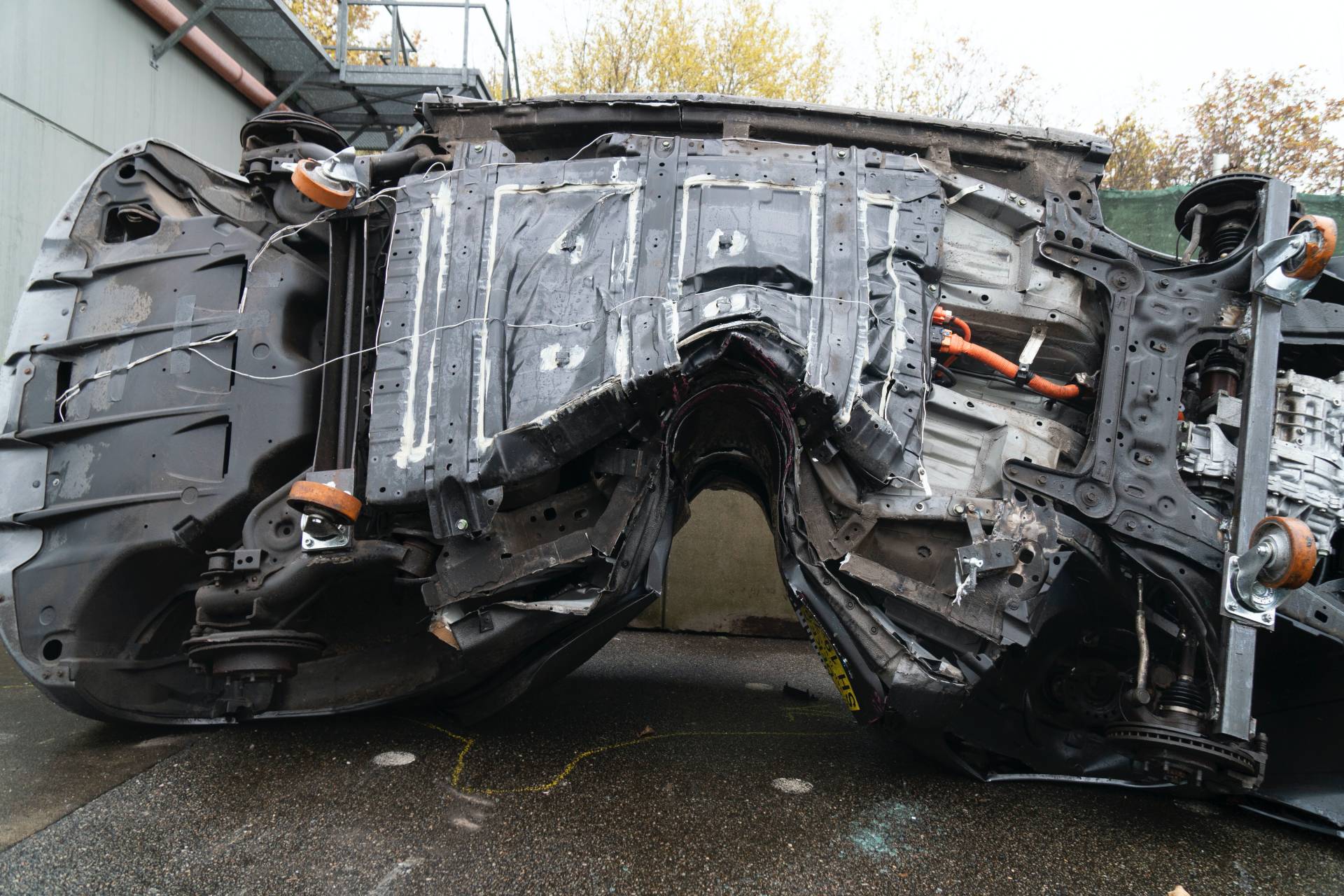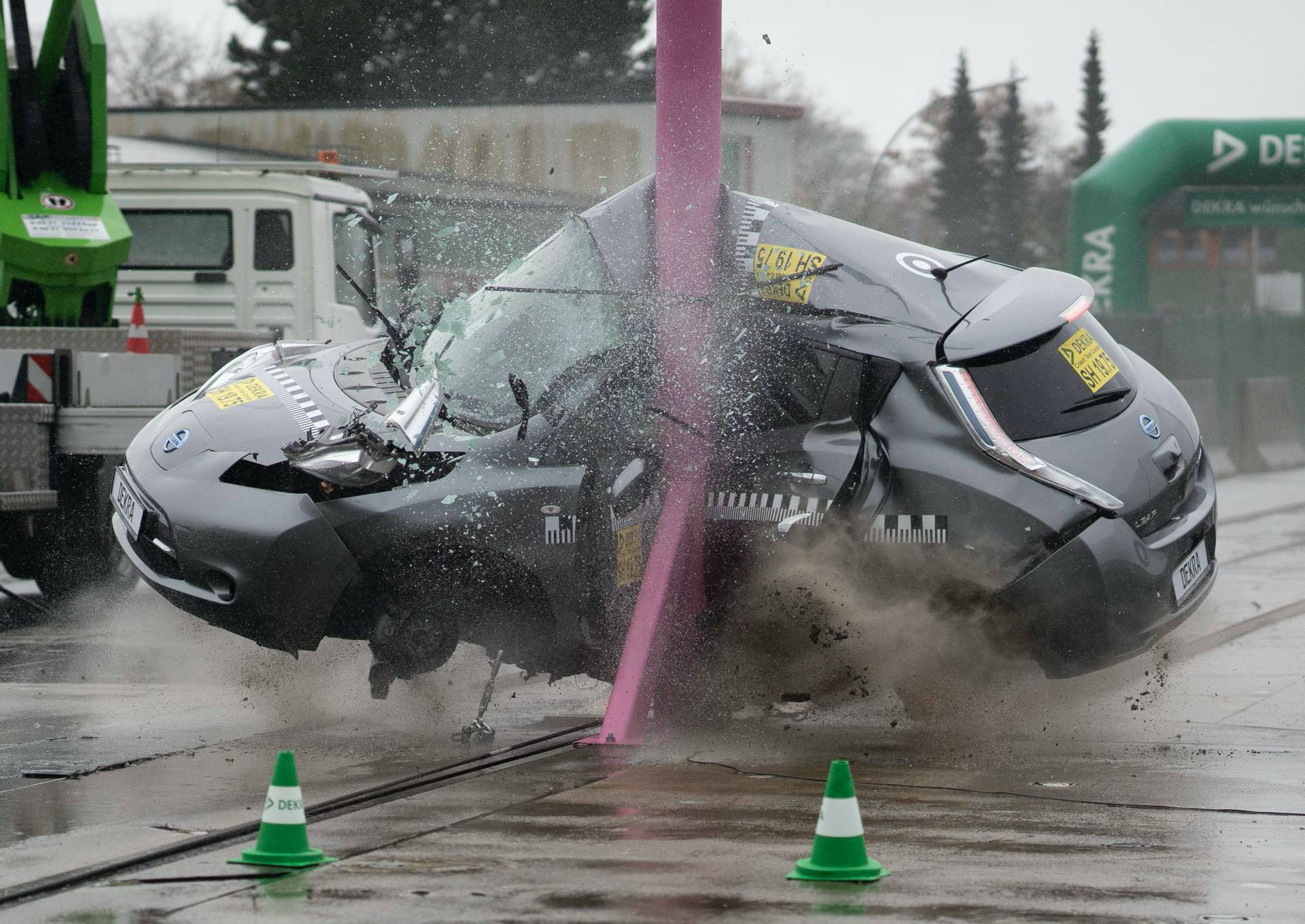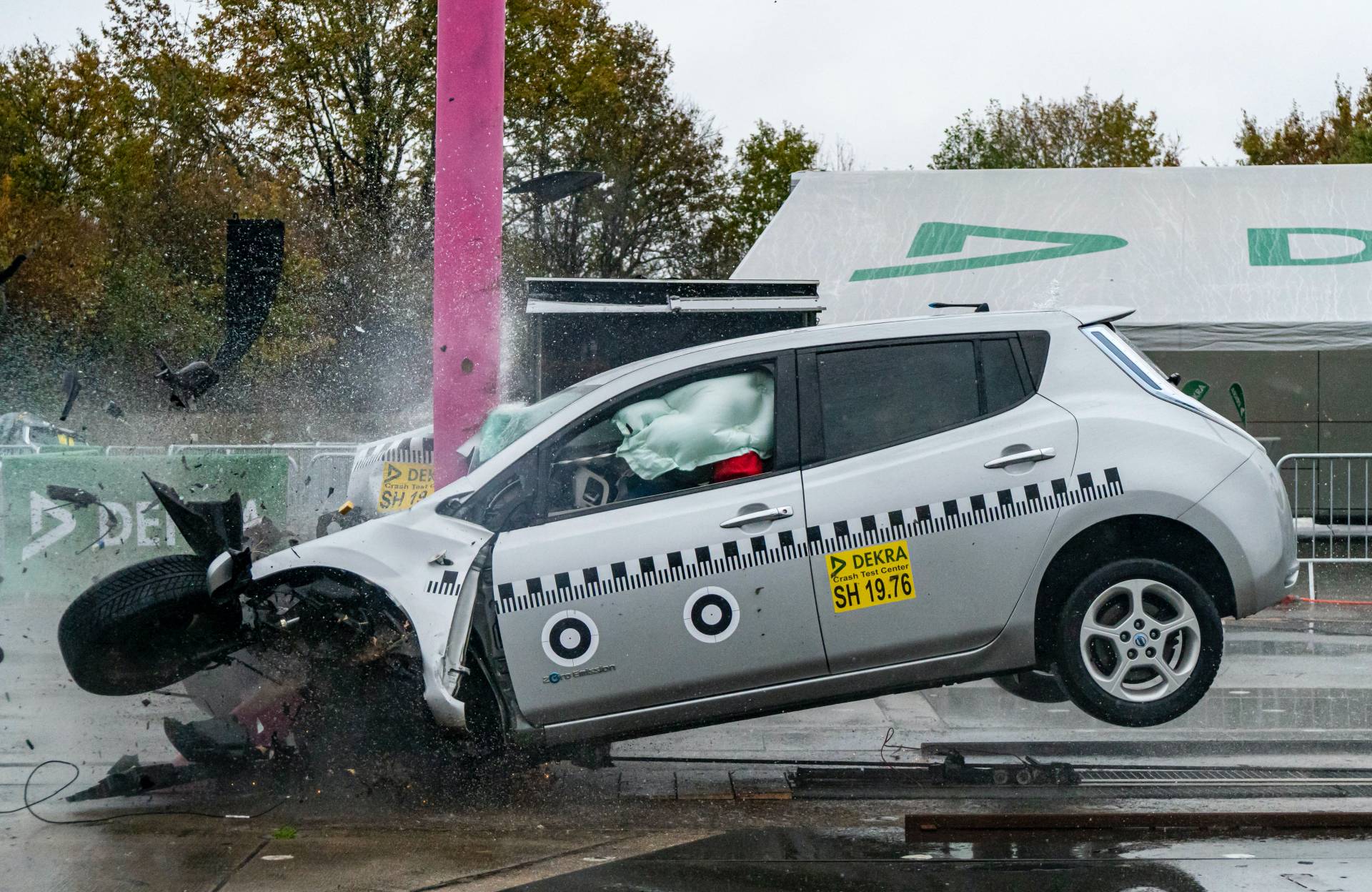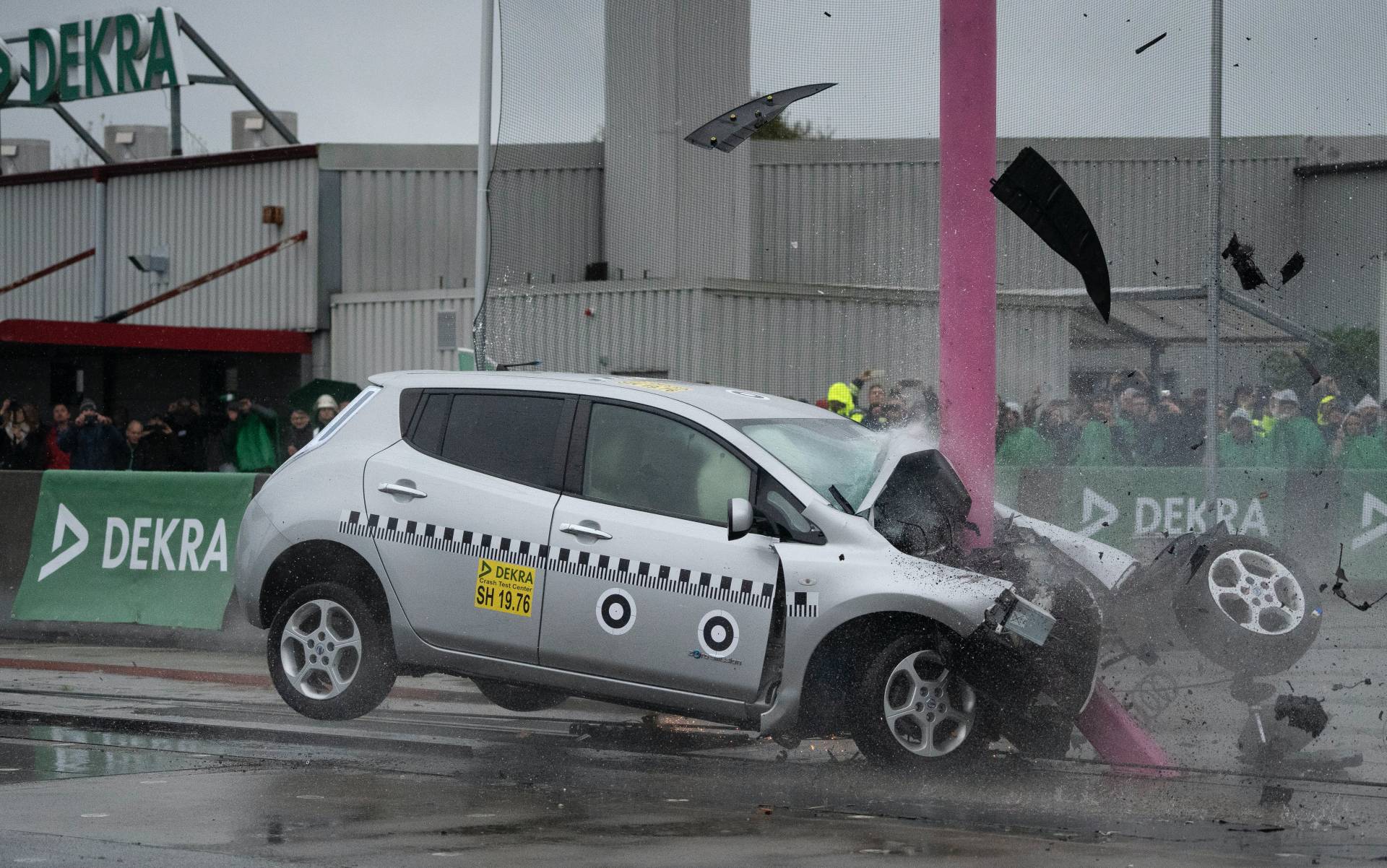Electric vehicles pose additional challenges when it comes to safety, mainly due to the batteries’ high risk of catching fire during an impact.
To find out how safe modern EVs are, DEKRA (German Motor Vehicle Inspection Association) has put the previous-generation Nissan Leaf and Renault Zoe (both rated at five stars in Euro NCAP testing) through much more severe crash tests than the current norms.
As part of a joint project of DEKRA accident research and University Medical Center Göttingen’s traffic accident research, the EVs were subjected to side pole and frontal crash tests at speeds far beyond those that are common in standard crash tests. Three of the four crash scenarios had the EVs collide laterally with a pole to simulate different types of impact with a tree.
Watch: Mercedes-Benz EQC Gets 5-Star Rating At Euro NCAP Crash Test
In the first test, the Renault Zoe was projected into the pole at 60 km/h (37 mph), then the Nissan Leaf underwent an identical same test, followed by another Leaf that hit the pole at 75 km/h (47 mph). Finally, a third Nissan Leaf underwent a frontal impact with the pole at 84 km/h (52 mph).
We only have footage from the latter two tests which were conducted at the highest speeds using the previous-generation Nissan Leaf. As you can imagine, the videos are really scary to look at – especially since DEKRA’s accident researcher Markus Egelhaaf says a lateral impact with a tree at such speeds would be hard to survive.
However, that doesn’t mean that EVs perform worse in this type of test than ICE-powered vehicles. “That applies to every type of car, regardless of the type of drive. The big manufacturers of series electric vehicles have managed to achieve at least the same level of safety that we know from gasoline vehicles,” the expert said.
The conclusion was that the EVs tested offer similar safety levels to comparable conventionally powered vehicles. The researchers noted that the damage patterns were comparable to ICE-powered cars, high-voltage systems were reliably shut down in the event of an accident, and there were no fires despite the strong deformation of the drive battery.
Another interesting conclusion was that rescuing passengers trapped in a crashed EV can be carried out just as fast as in a conventionally-powered vehicle, with DEKRA noting that there is no increased danger for first responders.



